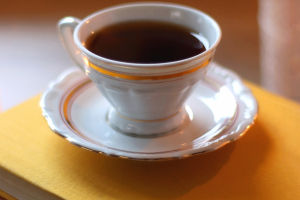As a member of the wind instrument family, the trumpet has perpetually held a paramount position in the realm of music.
Whether it embellishes a solo within a symphony orchestra, harmonizes within an ensemble, or captivates listeners with its resounding presence in a jazz band, the trumpet epitomizes a unique timbre and charm.
Today, we explore the historical lineage, technical intricacies, and the pivotal role of the trumpet as a quintessential instrument in the diverse tapestry of musical expression.
Historical Genesis and Evolution of the Trumpet
The roots of the trumpet delve deep into the annals of history, spanning centuries. Originating as a primitive horn, it gradually metamorphosed into the instrument we recognize today.
The earliest trumpets were crafted from animal horns, later evolving into metallic renditions. In the 17th century, the trumpet found its way into the grandeur of French court music, swiftly becoming an indispensable element in aristocratic social engagements.
By the 18th century, propelled by advancements in craftsmanship, the trumpet underwent a renaissance in design, amplifying its tonal range and volume, solidifying its stature as a quintessential member of orchestral ensembles.
Technical Marvels of the Trumpet
The trumpet, an aerophone, derives its melodic resonance from the player's breath. Infusing air into the trumpet's mouthpiece, vibrations within the instrument's chamber resonate, giving birth to sound.
One of its defining attributes lies in its luminous and crystalline tonality, particularly pronounced in its treble register. Categorically, trumpets are classified into two variants: the soprano, or treble trumpet, and the bass trumpet.
Mastery of the trumpet demands a symphony of skills encompassing precise breath control, adept lip manipulation, and nimble finger dexterity.
The trumpeter orchestrates pitch modulation and dynamics throughout a performance, finely calibrating lip tension and airflow to navigate through a melodic spectrum.
Trumpet's Versatile Manifestations in Music
Across the spectrum of musical genres, the trumpet stands as a stalwart contributor. In classical realms, it assumes pivotal roles within orchestral frameworks, carrying the mantle of soloist and ensemble linchpin.
Iconic compositions such as Beethoven's "Eroica Symphony" and Mahler's "Fifth Symphony" feature illustrious trumpet solos, a testament to its prominence.
In jazz, the trumpet becomes an instrument of improvisational prowess, infusing compositions with fiery, unrestrained solos that epitomize its fluidity and adaptability.
Similarly, the trumpet imparts rhythmic vitality and dynamic flourish in pop music, infusing compositions with a refreshing zest.
The Cultural Reverence of the Trumpet
Beyond its musical prowess, the trumpet embodies profound cultural significance in various societies.
In certain regions, it serves as an emblem of courage and honor. For instance, the trumpet resounds with patriotic fervor in the United States, heralding marches and commemorative ceremonies, enshrining its status as a national symbol.
Likewise, the trumpet's resounding notes punctuate celebrations and ceremonial rites in Europe, symbolizing solemnity and reverence.
A Harmonious Cadence: In Conclusion
As an instrument steeped in antiquity yet pulsating with vibrancy, the trumpet remains an indomitable force in music. Its resplendent timbre and technical finesse are matched only by its cultural resonance.
Whether in the grandeur of classical symphonies, the improvisational cadence of jazz, or the buoyant pop rhythms, the trumpet unfurls its melodic tapestry with unwavering allure.
Let us, therefore, unite in embracing the symphonic passion ignited by the trumpet, reveling in the exquisite beauty of its tonal palette.


